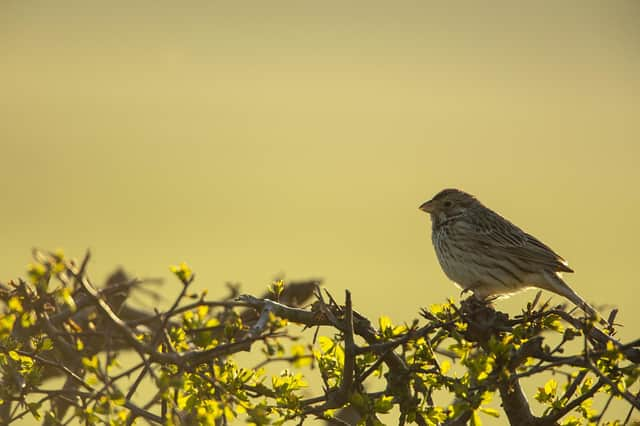Project pulls birds back from brink


This year’s survey results, announced by RSPB Scotland, revealed another record increase in corn bunting numbers in Angus, as well as in Fife, and also demonstrated how efforts to save the species have increased in the North east.
In Angus, numbers have increased by 82% in the same time period, and there are now 60 corn bunting territories in the area. This equates to a 233% increase since their lowest point in 2008.
Advertisement
Hide AdAdvertisement
Hide AdOverall figures are currently unavailable for the North east, however huge efforts have been made by many farmers to manage their land in a way to benefit corn buntings the most. RSPB Scotland has praised the dedication, passion and commitment of all those involved in the Corn Bunting Recovery Project across Scotland.
Yvonne Stephan, a conservation adviser for RSPB Scotland, said: “Even after so many years, it’s amazing to see local farmers and landowners doing their best to help corn buntings. It’s heart-warming to see just how much effort has gone into bringing this little bird back from the brink, and how successful the management on participating farms has been.”
There have been dramatic declines for the corn bunting population over decades. In eastern Scotland numbers fell by 83% between 1989 and 2007, earning them the unfortunate accolade of being one of the fastest declining birds in Scotland.
Farmers and land managers are using a combination of agri-environment scheme options, voluntary action and upgraded greening measures to secure the future of this iconic bird, and have created over 1500ha of corn bunting nesting and feeding habitat within the last two years.
Advertisement
Hide AdAdvertisement
Hide AdChris Bailey, RSPB Scotland advisory manager, added: “While the success we are seeing is undoubtedly down to the enthusiasm and commitment of the farmers involved, it also points to the importance of having the right funding and measures in place to help deliver the work on the ground.”